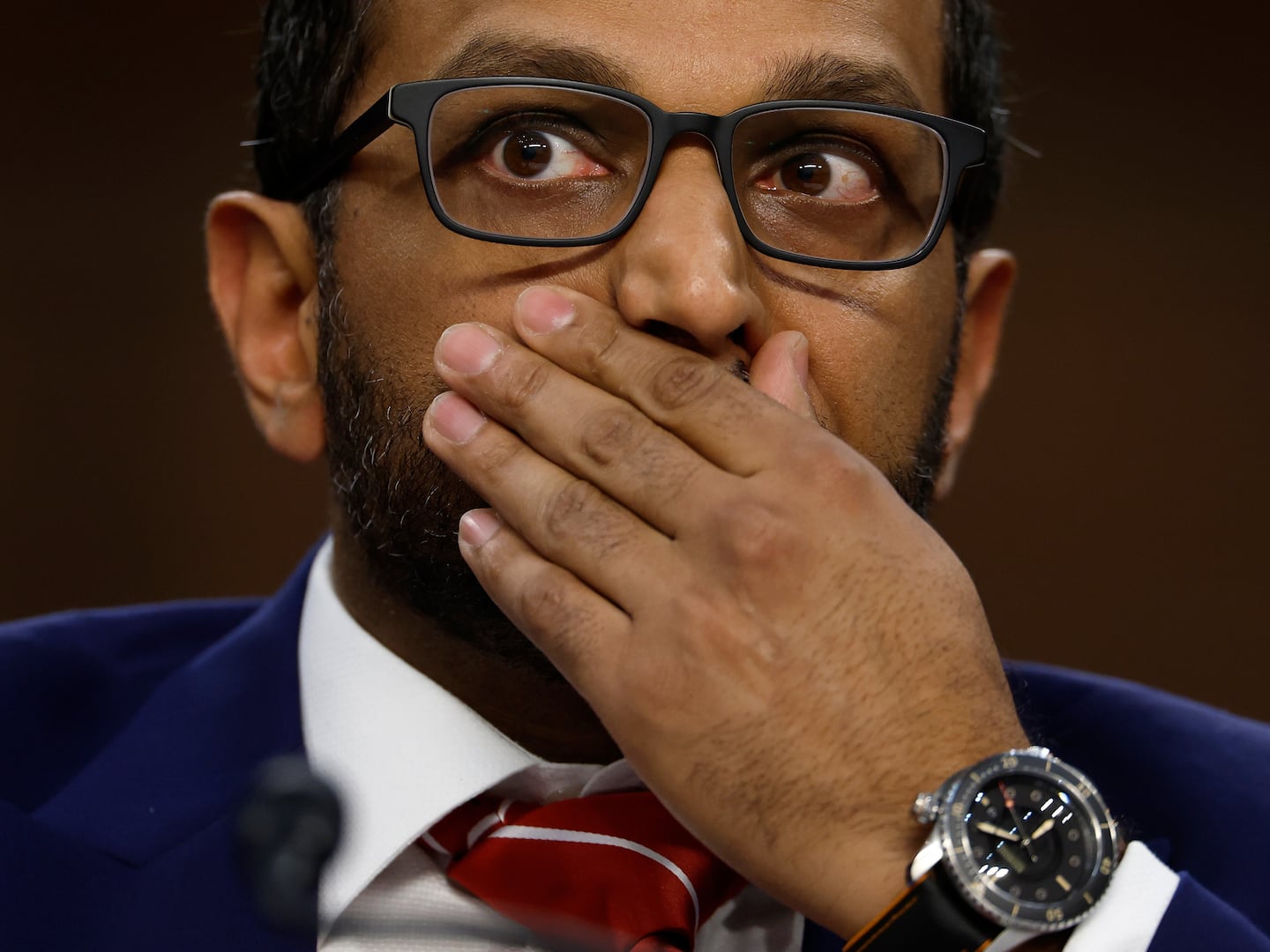2015 was the year that launched the gender fluidity revolution. Stars like Miley Cyrus and Orange Is the New Black heartthrob Ruby Rose publicly announced that they have a complicated relationship with gender.
While Rose described herself as “sort of gender neutral,” Cyrus came out as genderqueer last May in an interview with Out. “I didn’t want to be a boy,” the 23-year-old said of her childhood. “I kind of wanted to be nothing. I don’t relate to what people would say defines a girl or a boy, and I think that’s what I had to understand: Being a girl isn’t what I hate, it’s the box that I get put into.”
While Cyrus and Rose’s identities have been celebrated, finding that same acceptance remains a struggle for men (or more appropriately: “male-bodied individuals”) who eschew gender norms. I recently ran into a journalist colleague who works for a competitor site. He often describes himself on the “Jaden Smith beat,” and last week kept him busy: Louis Vuitton announced that Smith, the 17-year-old multi-hyphenate who believes time is an illusion, would be the new face of its womenswear campaign.
Many credited Smith—who wore leggings and a skirt to his prom—for being a fashion “trailblazer,” but the reaction on social media wasn’t so universally positive. On Twitter, critics called him a “young confused man,” while others advocated that his father, Will Smith, get involved to take his blouses away. One blogger even argued that Jaden’s clothing choices are an insult to black masculinity: “Jaden’s position was used against him and he appears to be oblivious to it.”
My friend explained that one of the reasons stories about Smith’s gender had proved so popular on his site is because they draw so much hate from readers—with thousands of comments exactly like these.
The mainstream acceptance of gender fluidity faces a huge roadblock in toxic masculinity. If a certain famous hashtag suggests that our definitions of manhood are fragile, they’re also treated as inviolably rigid, while femininity is allowed to be negotiable and mutable. After all, the backlash to Smith’s fluidity is a version of what queer and bisexual men have been dealing with for decades—with even The New York Times lending credence to the “You’re either gay, straight, or lying” myth in a 2005 piece questioning male bisexuality.
Female fluidity certainly has its attendant stigma, but it’s light-years ahead of where men are on the issue.
If men are trapped in the binary, websites, universities, and advocates across the country are working to open the door—and give them room to roam. In 2014, gender fluidity found an unlikely ally in Facebook, after the social media platform announced that it would be expanding its gender identification options to include over 50 choices—including “intersex,” “neutrois,” “neither,” “pangender,” and “two-spirit.” Should none of these speak to you, there’s also a custom option that allows users to self-identify.
Across the country, college campuses are joining that fight by recognizing gender-neutral pronouns and identifiers. The Center for Diversity and Inclusion at American University provides students with a helpful pronoun overview—in the form of a pamphlet to help determine your “zes” from your “pers” (two of the department’s officially recognized pronouns). When in doubt about what to call someone, the pamphlet advocates, just ask respectfully.
Other colleges that have embraced gender-neutral pronouns include Wesleyan, Vanderbilt, and Harvard—in order to meet the needs of their student population. While it seems like this would affect a small number of undergraduates, reports from the University of Vermont indicate the opposite: Since the school began officially recognizing “neutral” as an option in demographic data back in 2009, The New York Times reported that 1,891 students have specified a preference other than male or female. A robust 228 only wanted to be referred to by their name—with no pronoun at all.
Gender fluidity isn’t just a student movement. You can see signs of its increasing ubiquity across the cultural landscape. Last year, the Oxford English dictionary added “Mx.” to its lexicon, an honorific that offers a gender neutral alternative to “Mr.” and “Ms.” In 2015, The American Dialect Society—a 127-year-old institution—recognized “they” as its word of the year. The retailer Selfridge’s even opened up an entire gender-neutral store, called Agender.
If the fashion industry has gotten on board with blurring the lines of gender, that’s because, to a certain extent, the trend been in vogue ever since Coco Chanel sewed her first pair of women’s trousers. “I gave women a sense of freedom,” Chanel said of bringing pants to ladies’ closets. Since then, women from Greta Garbo and Marlene Dietrich to Annie Lennox and Grace Jones have become timeless style icons for daring to embrace masculinity.
In the 1976 Woody Allen romantic comedy Annie Hall, Diane Keaton would pioneer a new era of menswear for women—almost as if by accident. In one scene, she’s famously dressed in an androgynous black vest with an oversized man’s tie, her ensemble topped off with an iconic bowler. The casual ensemble was based on Keaton’s own wardrobe.
Popular culture, however, remains resistant to the idea of a “man in a dress,” outside of selected New York runways. As late as 2012, a TV sitcom on a major network—the swiftly cancelled Work It!—played the idea of men in women’s clothing for laughs. In Ireland, the laugh-track comedy Mrs. Brown’s Boys has remained enormously popular, despite the fact that the show’s only joke is that it stars a foul-mouthed take on Robin Williams’s Mrs. Doubtfire character.
These comedic tropes—which have been used in everything from Bosom Buddies to Tootsie—both speak to our society’s deep-seated transphobia and our dangerous masculinity panic. To walk down the street dressed like Annie Hall might get you a cute guy’s number. To do the same while dressed like Tom Hanks or Peter Scolari could be life threatening. In 2015, a record number of trans women were murdered, likely because society—and their attackers—continued to view them as nothing more than “men in dresses.”
Masculinity isn’t just fragile, it’s deadly.
In the face of that toxicity, gender nonconforming people are continuing to challenge the notion that there’s anything wrong with dressing like a woman. Singer-songwriter Ezra Furman frequently performs onstage in pearls and lipstick. Magic Johnson’s son, EJ, regularly rocks the red carpet in diamonds, tennis bracelets, and women’s blazers. But rapper and R&B artist Shamir put it best in a tweet about his orientation last year. “I have no gender, no sexuality, and no fucks to give,” he said.
Despite the public vitriol directed at Jaden Smith, there are signs that even toxic masculinity is coming around. This past January, AXE debuted an ad entitled “Find Your Magic,” an inclusive take on confidence that critics say offered a more “grown-up take on masculinity” than the body spray company’s usual frat-boy aesthetic. The minute-long segment prominently features a man voguing in four-inch stilettos. “Who needs… fire, when you rock those heels?” the narrator asks.
If a bro-centric brand that once literally told men that women are nothing but castrators can get on board with gender fluidity, perhaps there’s hope for masculinity after all.






